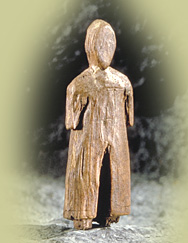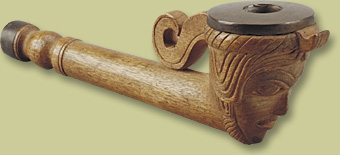|
|
Arrival of Strangers - The Last 500 Years
"The Shock Wave" Tomson Highway, in Geoffrey York, The Dispossessed Aboriginal people first discovered European visitors on the shores of the Atlantic Ocean nearly 1,000 years ago. Since then, first meetings between Aboriginal people and Europeans have happened at different times, in different regions of the continent. They are commemorated in objects, inscriptions on stone, community histories and travelers' logs.
Aboriginal and European people saw one another for the first time from entirely different cultural viewpoints. But they found common ground in the exchange of goods and greetings, in hospitality and the minor transactions of everyday life. Each took for granted that they held basic ideas in common, such as the nature of land, and the place of human beings on the earth. Now, centuries later, their descendants work to understand one another better. As the implications of their different cultural perspectives become clear, first meetings continue on a new and deeper level. Atlantic CoastMi'kmaq people have preserved the memory of their first encounter with Europeans in a story told and retold. Before the coming of the white man, a Mi'kmaq girl dreamed that a small island floated in toward the land. On the island were bare trees and men - one dressed in garments of white rabbit skins. She told her dream to the wise men, but they could not explain the meaning. The next day at dawn, the Mi'kmaq saw a small island near the shore, just as the girl had dreamed. There were trees on the island and bears climbing among their bare branches. The people seized their bows and arrows to shoot the bears. To their amazement, the bears were men. Some of them lowered into the water a strange canoe, into which they jumped and paddled ashore. Among the men was one dressed in a white robe who came toward them making signs of peace and goodwill. Raising his hand, he pointed toward the heavens. Retold by Stephen Augustine, from an original by Silas Rand in Legends of the Micmacs, 1894 Northwest TerritoriesDene near the present site of Yellowknife, in the Northwest Territories, met explorer Samuel Hearne on June 22, 1771. Hearne recorded in his journal: "As I was the first [white man] they had ever seen, and in all probability might be the last, it was curious to see how they flocked about me, and expressed as much desire to examine me from top to toe, as an European Naturalist would a nondescript animal. They... pronounced me to be a perfect human being, except in the colour of my hair and eyes: the former, they said, was like the stained hair of a buffaloe's tail, and the latter, being light, were like those of a gull. The whiteness of my skin also was, in their opinion, no ornament, as they said it resembled meat which had been sodden in water till all the blood was extracted..." "The history of our people needs to be told. We need to present accurately what happened in the past, so that we can deal with it in the future.... I don't like what has happened over the last 500 years. We can't do much about that. But what are we going to do about the next 500 years? What are we going to do about the next ten years?" Georges Erasmus, "Speech on Planned Celebration of 1992", Canadian Forum
Landscape photograph: | |||

